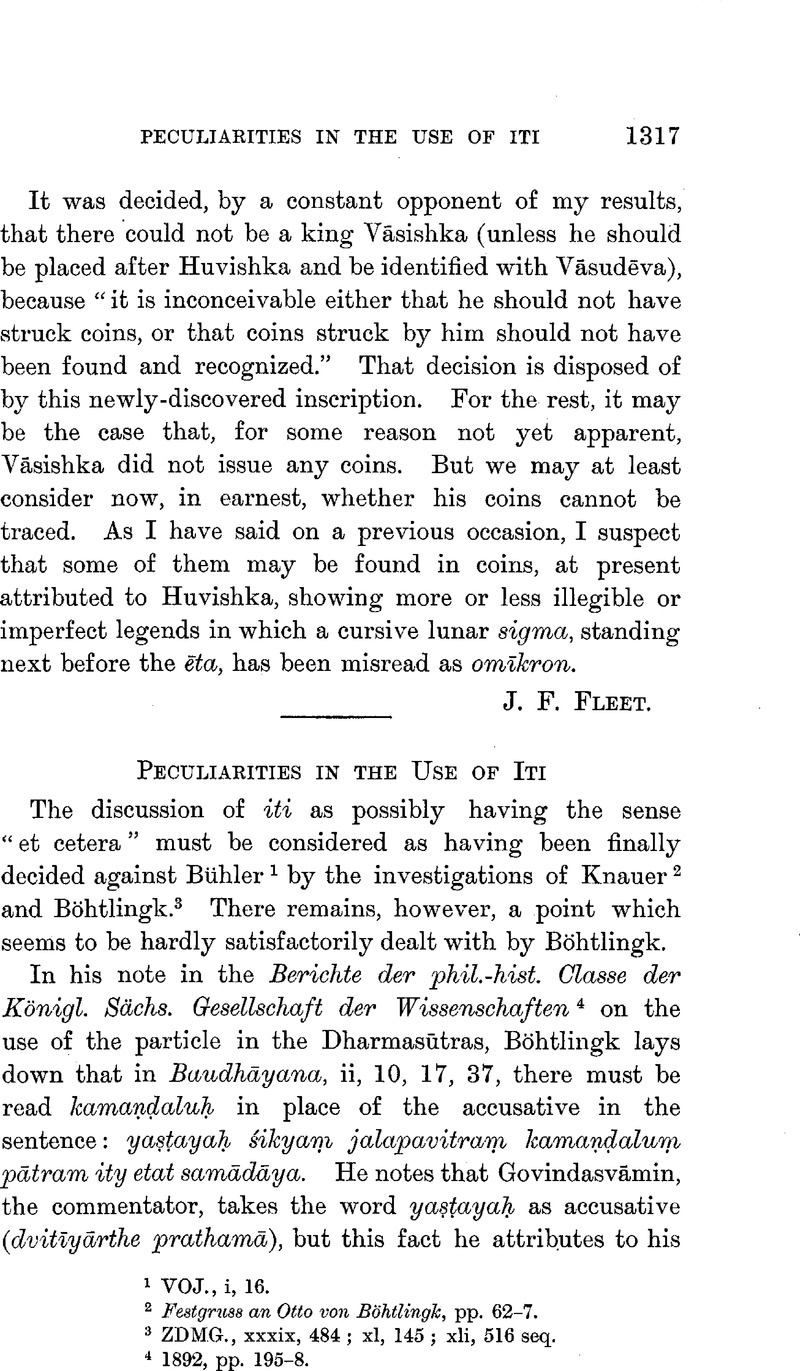No CrossRef data available.
Article contents
Peculiarities in the Use of Iti
Published online by Cambridge University Press: 15 March 2011
Abstract

- Type
- Miscellaneous Communications
- Information
- Copyright
- Copyright © The Royal Asiatic Society 1910
References
page 1317 note 1 VOJ., i, 16.
page 1317 note 2 Festgruss an Otto von Böhtlingk, pp. 62–7.
page 1317 note 3 ZDMG., xxxix, 484; xl, 145; xli, 516 seq.
page 1317 note 4 1892, pp. 195–8.
page 1318 note 1 Lanman, , Noun Inflection in the Veda, pp. 385, 394, 410Google Scholar.
page 1318 note 2 Hopkins, , Great Epic of India, p. 264Google Scholar, note; Michelson, , JAOS., xxv, 105Google Scholar.
page 1318 note 3 Śānkhāyana Āraṇyaka, p. 51, n. 6.
page 1318 note 4 See e.g. Böhtlingk, , Sächs. Ber., 1892, p. 196Google Scholar; Chrestomathie2, p. 356; Delbrück, , Synt. Forsch., v, 533Google Scholar.
page 1319 note 1 Delbrück (op. cit., v, 213, note) is uneasy as to this passage, hints at emendation. In the Kāṭhalca Saṃhitā, xi, 3, there is no yathā.
page 1319 note 2 Ibid., p. 533.
page 1319 note 3 Cf. a similar argument in Monro, , Homeric Grammar2, p. 239Google Scholar.
page 1320 note 1 Cf. Delbrück, op. cit., p. 596, for fut. with yathā.
page 1320 note 2 Here the iti is that following the whole sentence.
page 1321 note 1 JAOS., xxviii, 404. If the sense is “says of one”, the construction is regular, but the probabilities are strongly in favour of Hopkins' version. In some cases, however, “say of” is certain, e.g. Śatapatha Brāhmaṇa, xii, 4, 3, 8. Cf. also my Śāṅkhāyana Āraṇyaka, p. xv.


